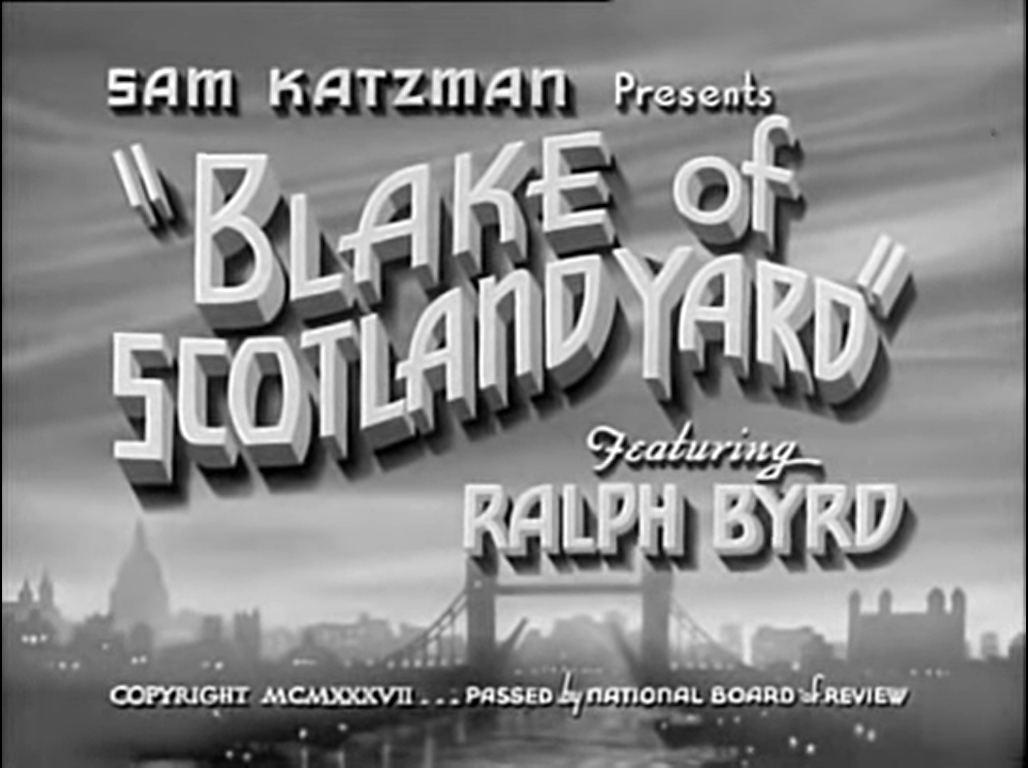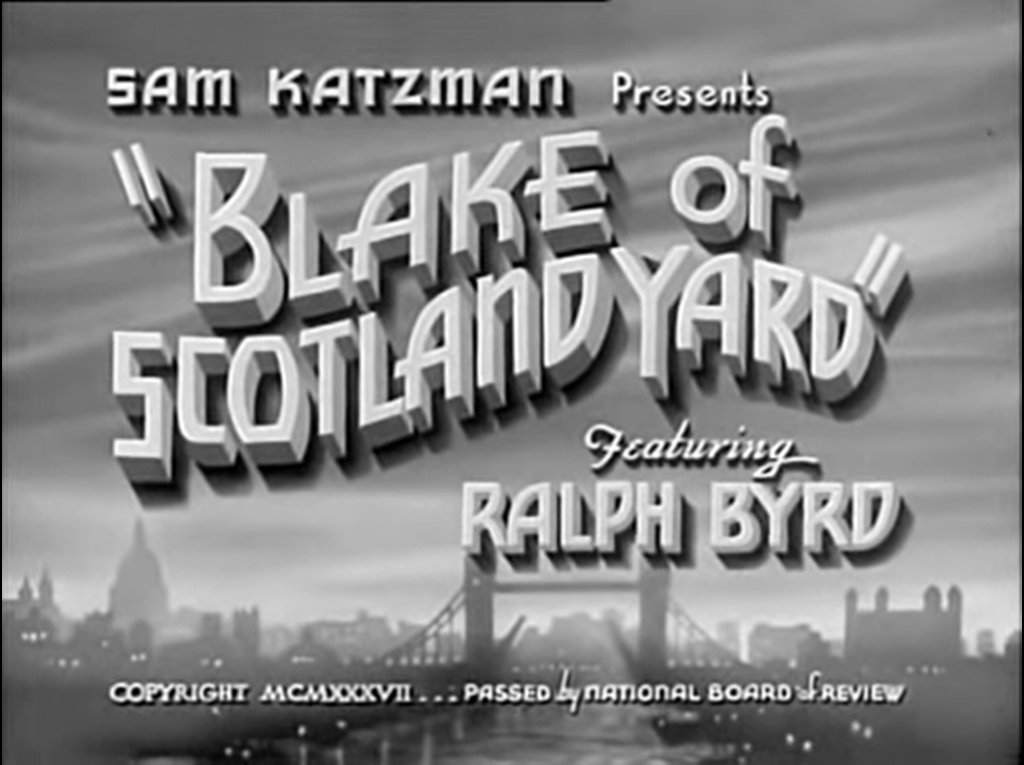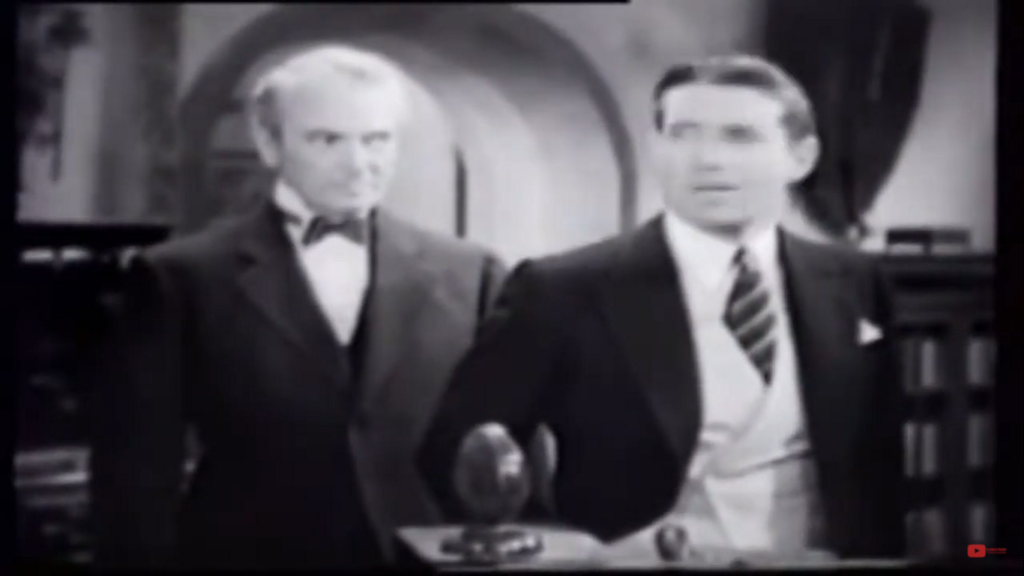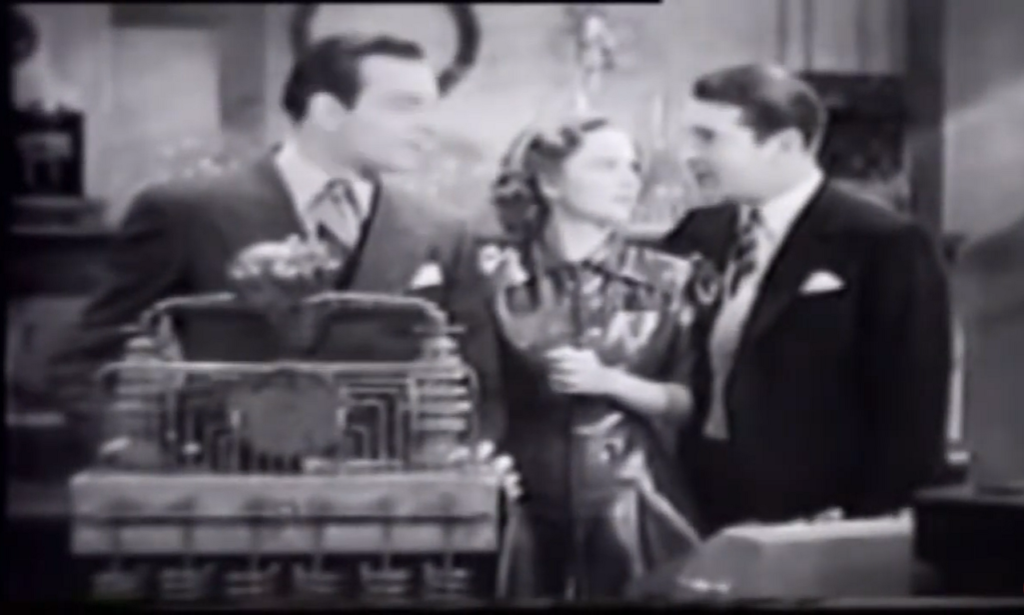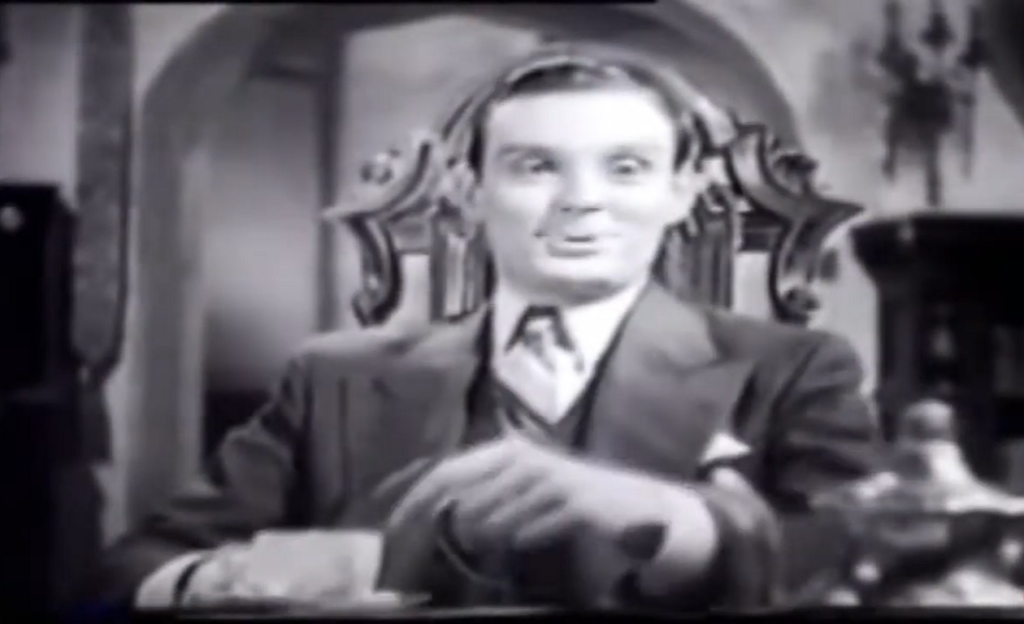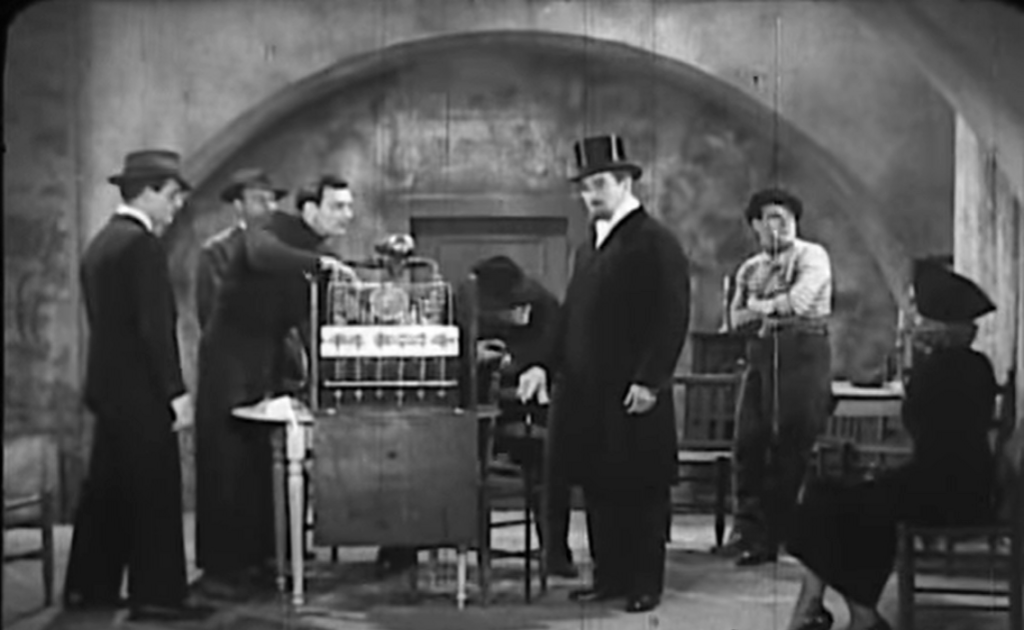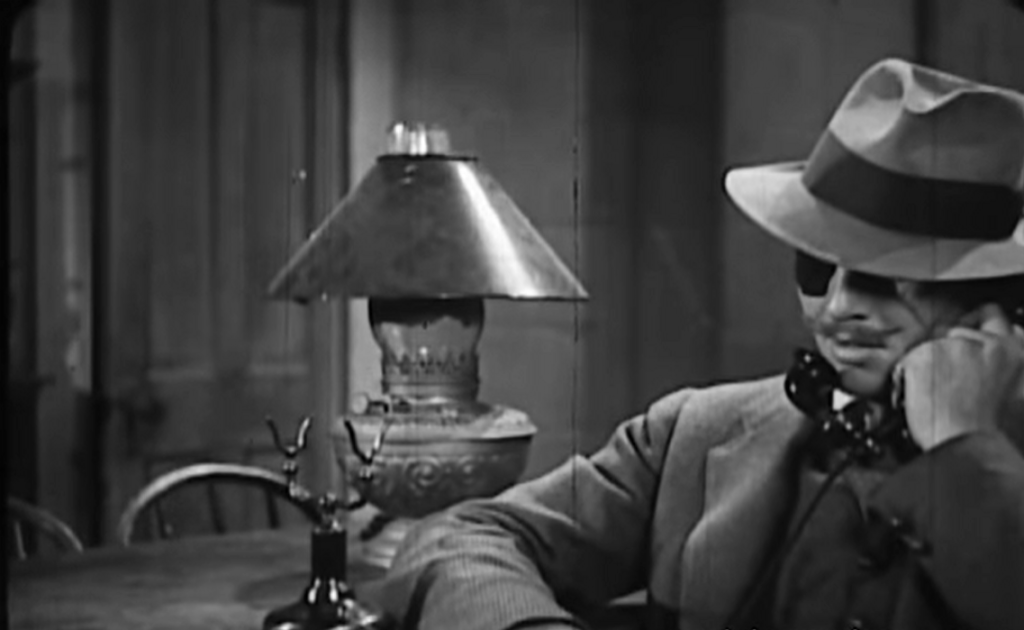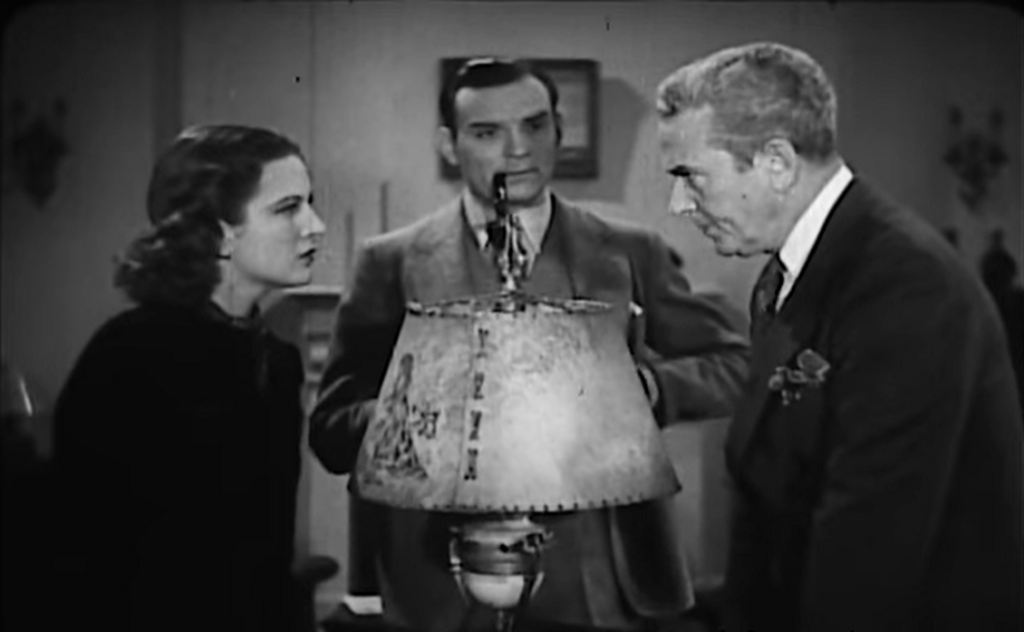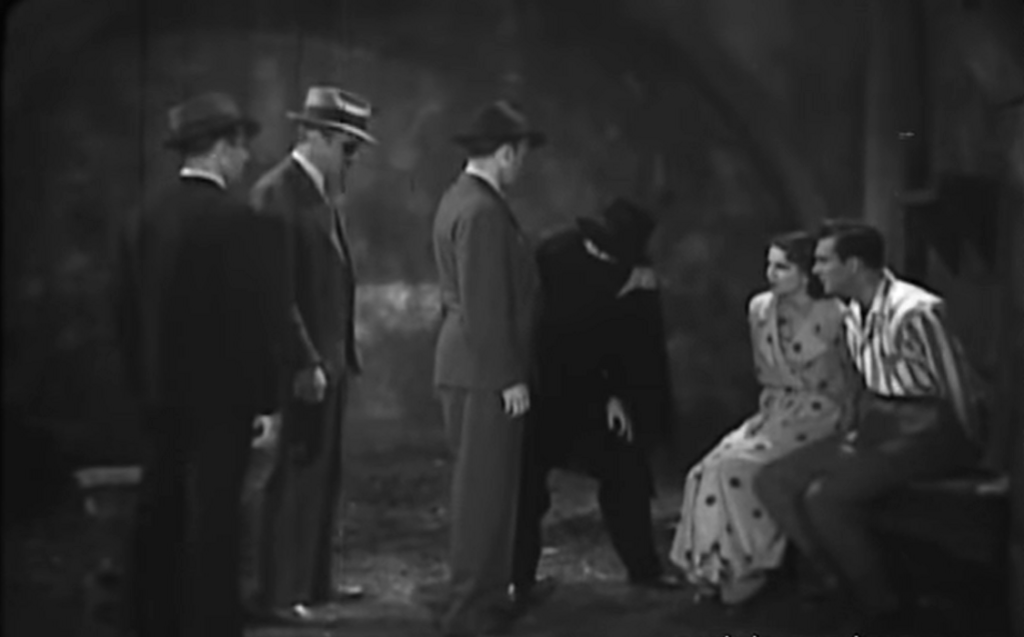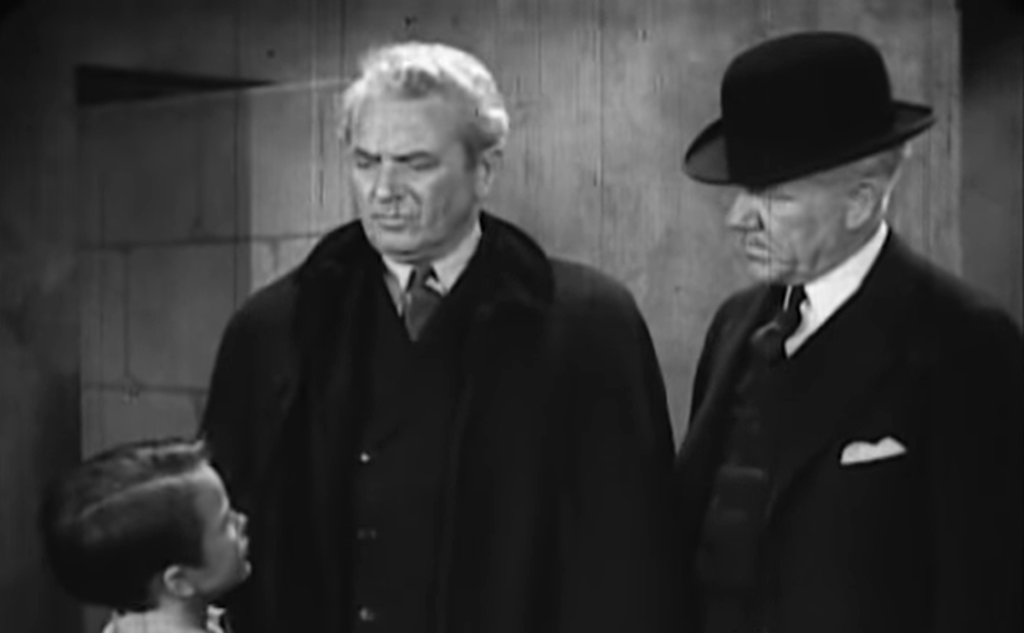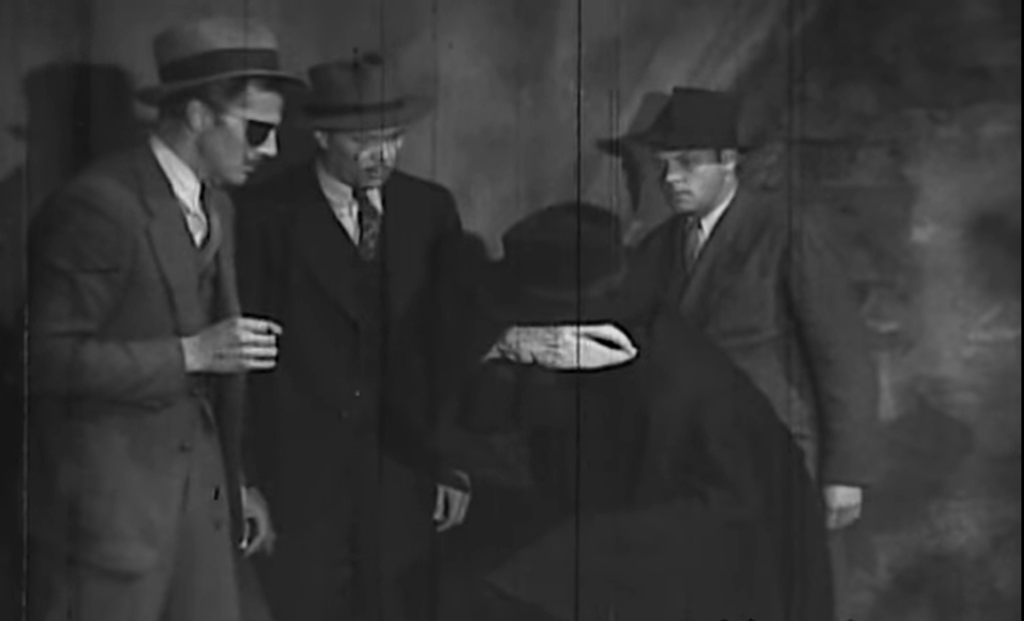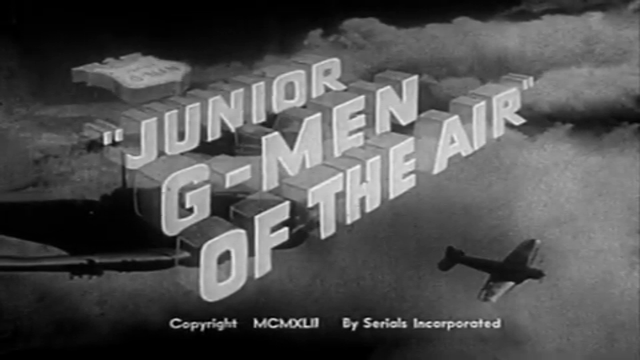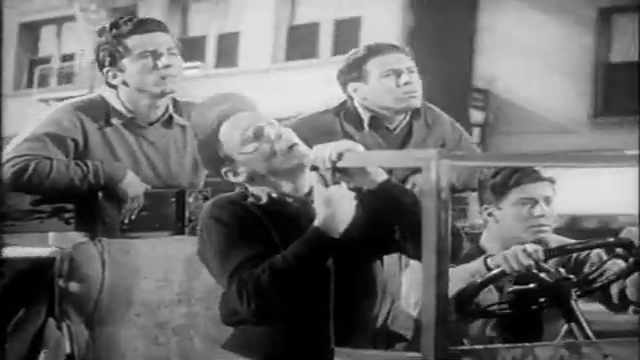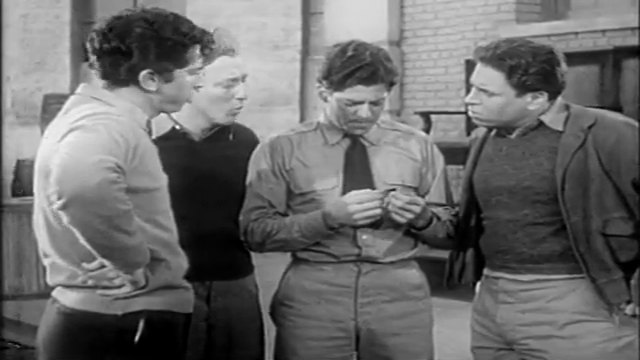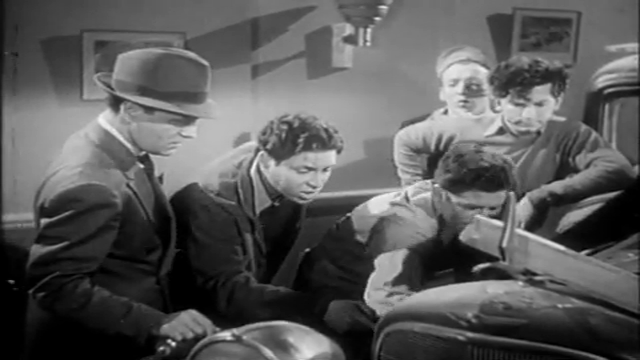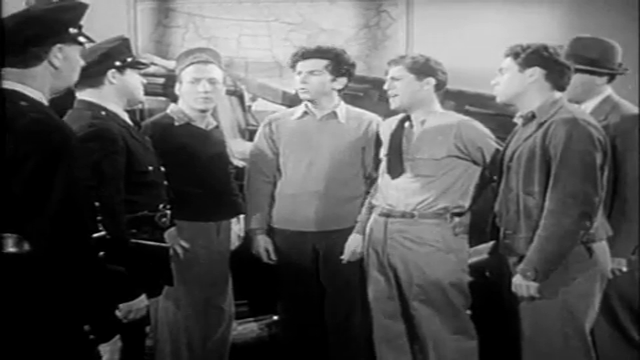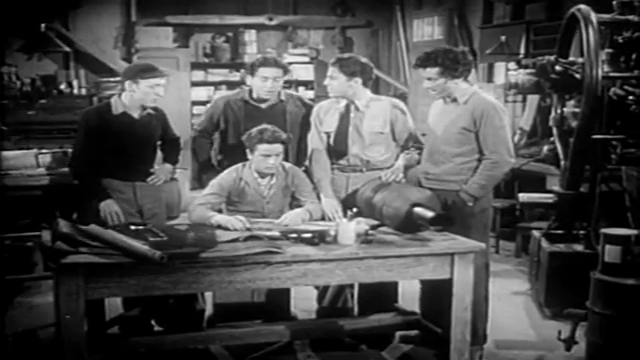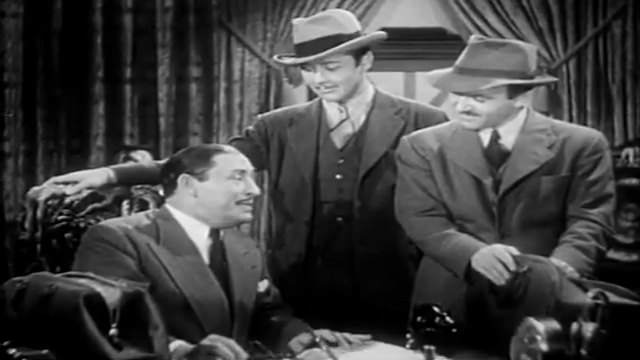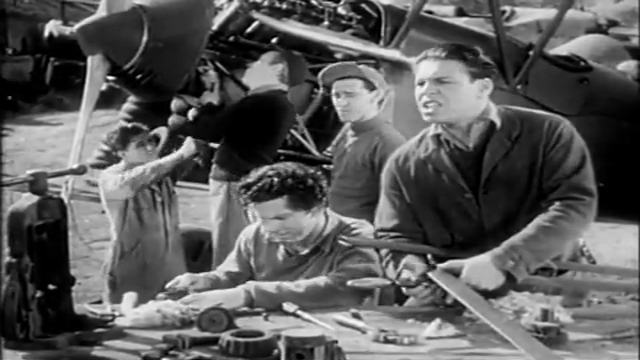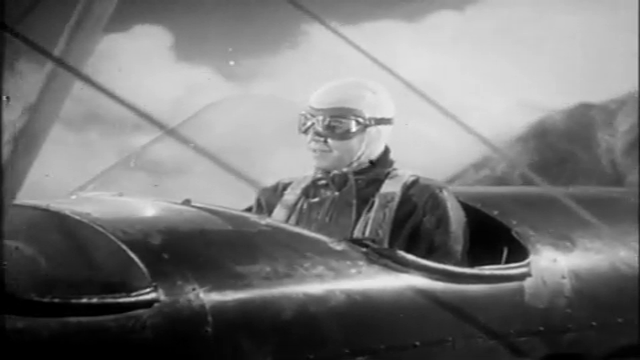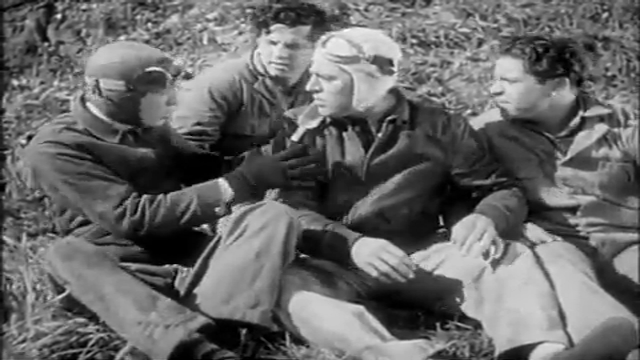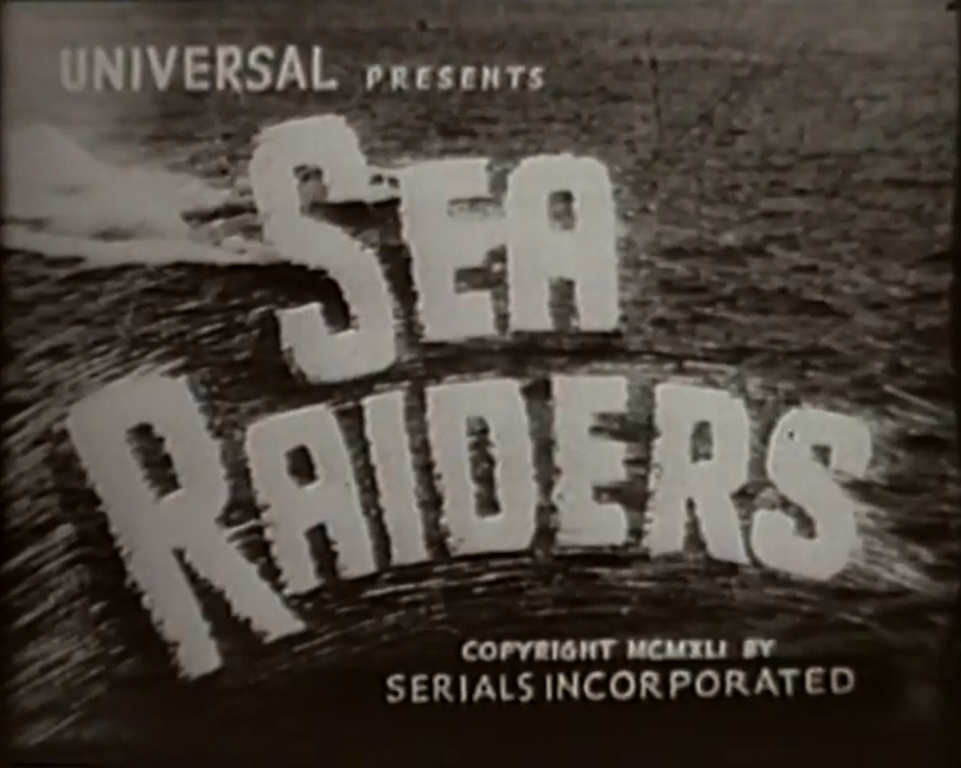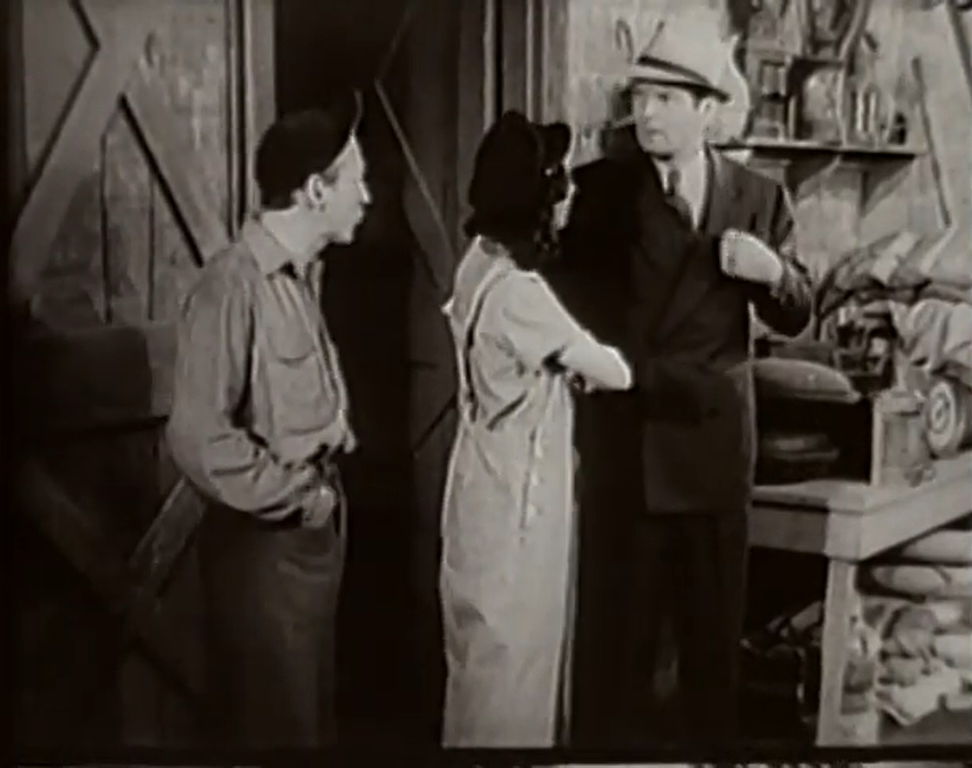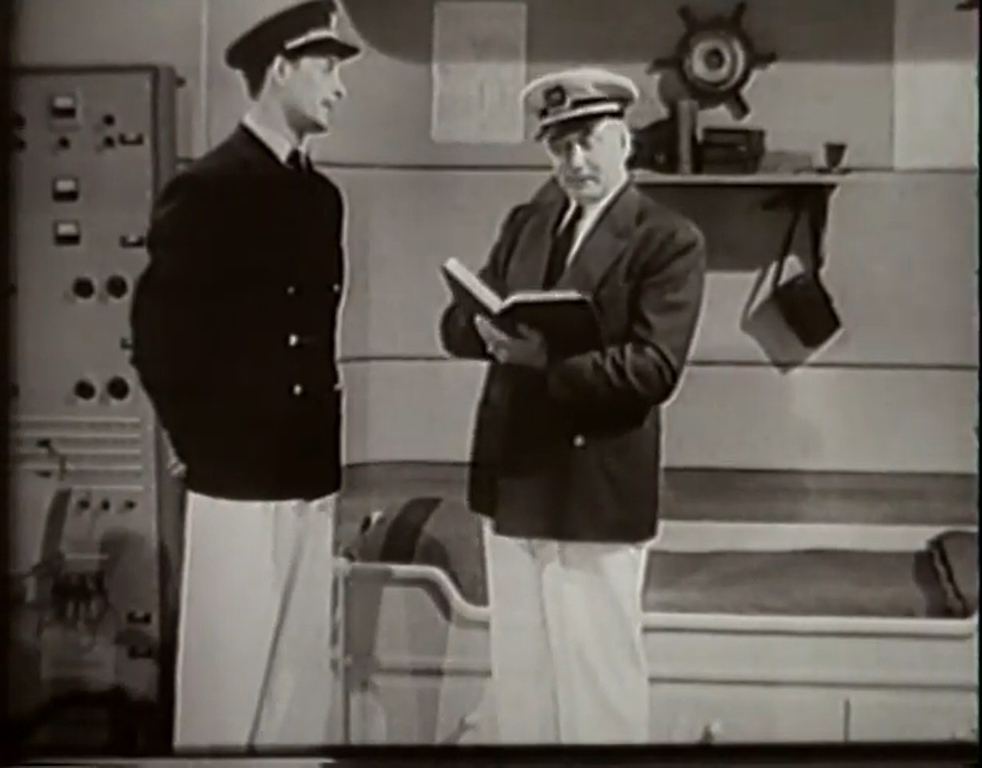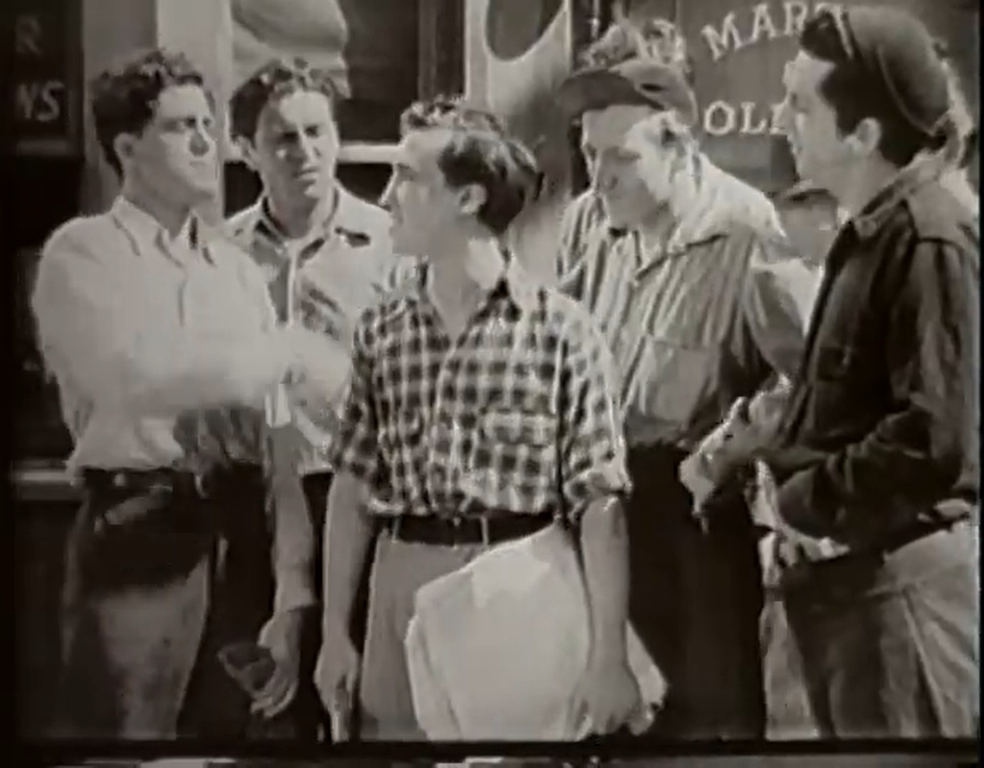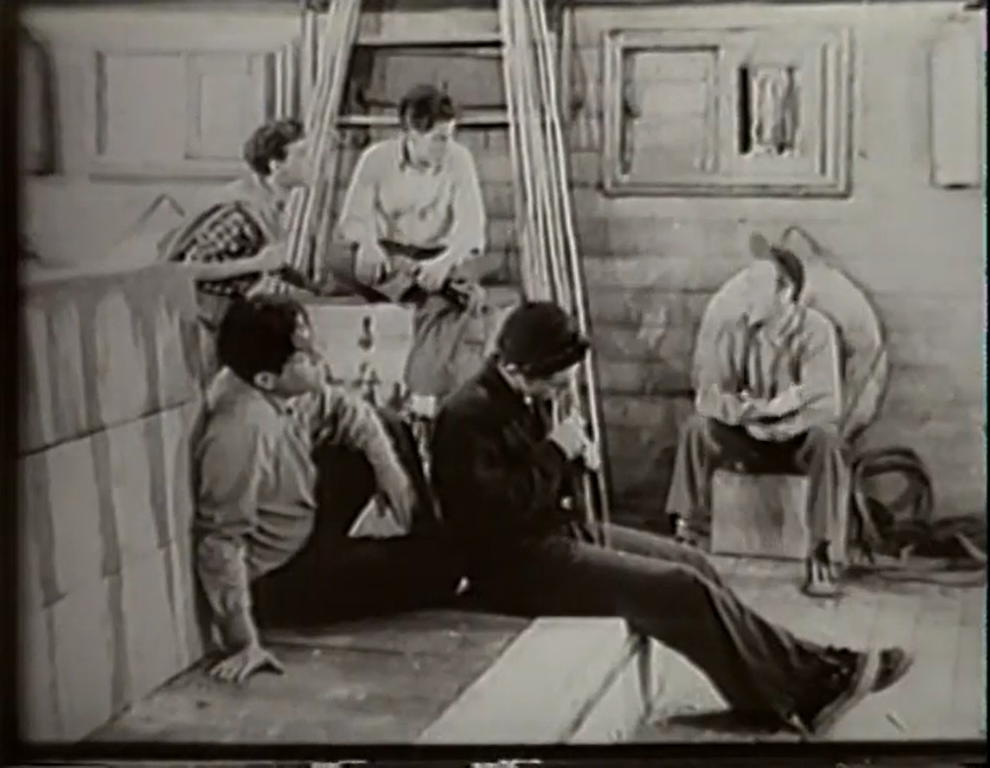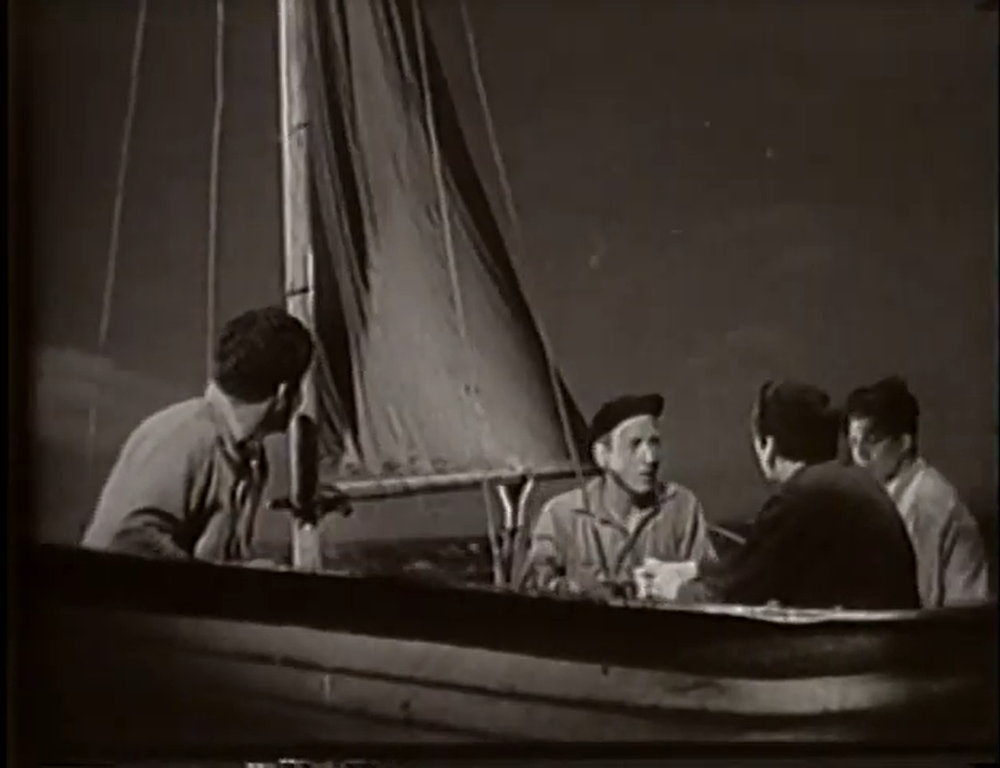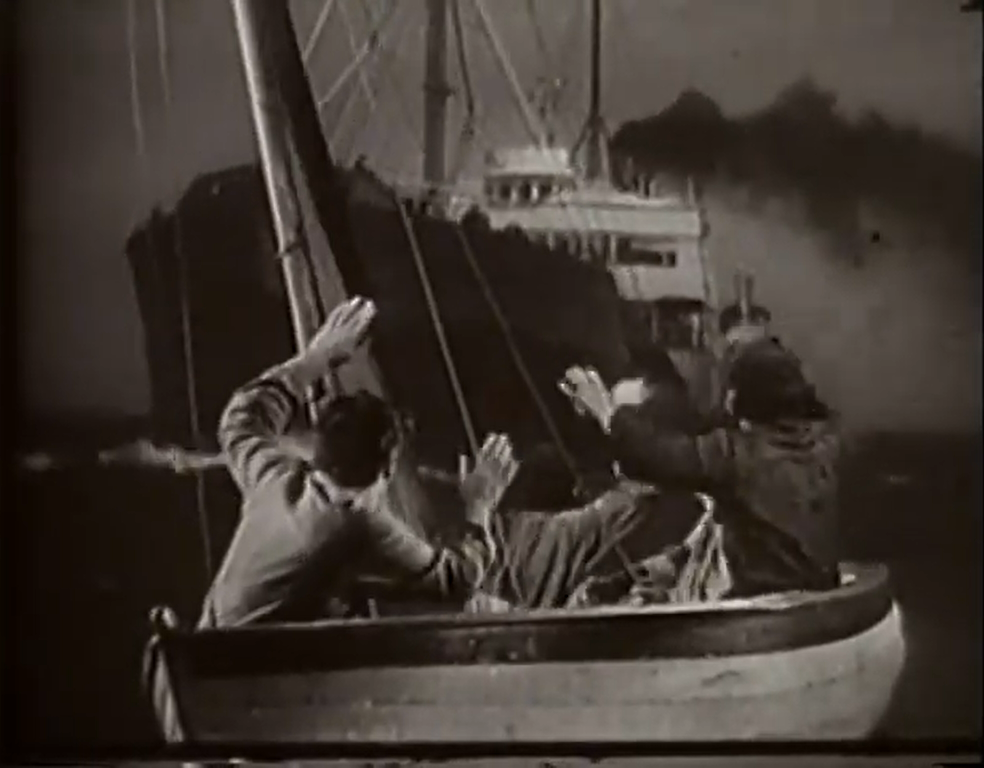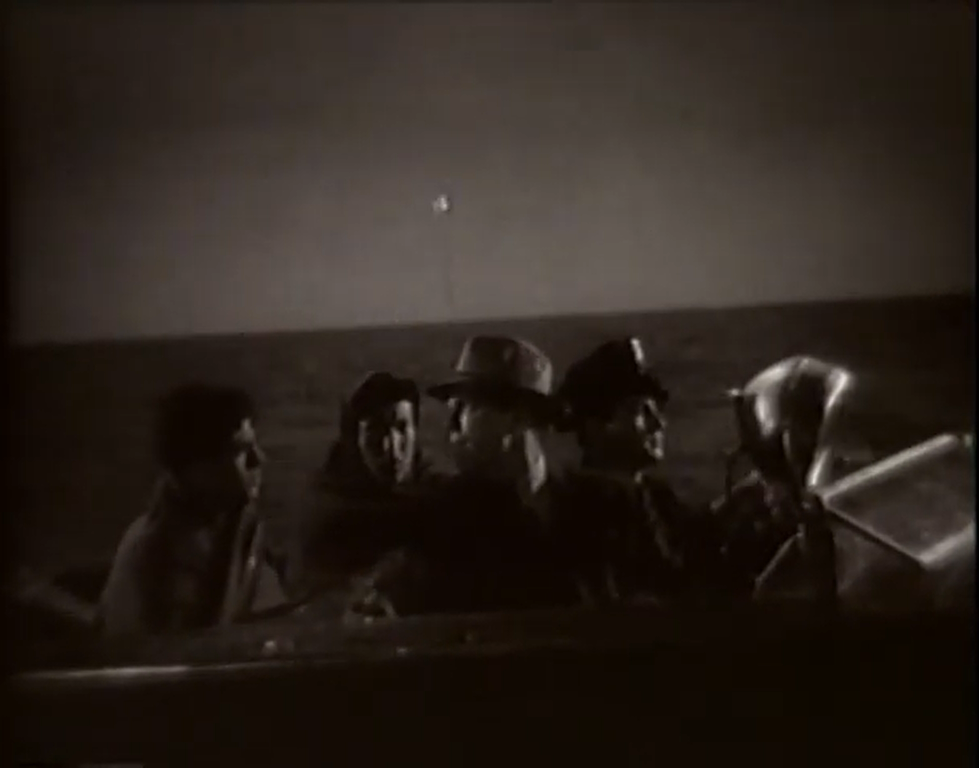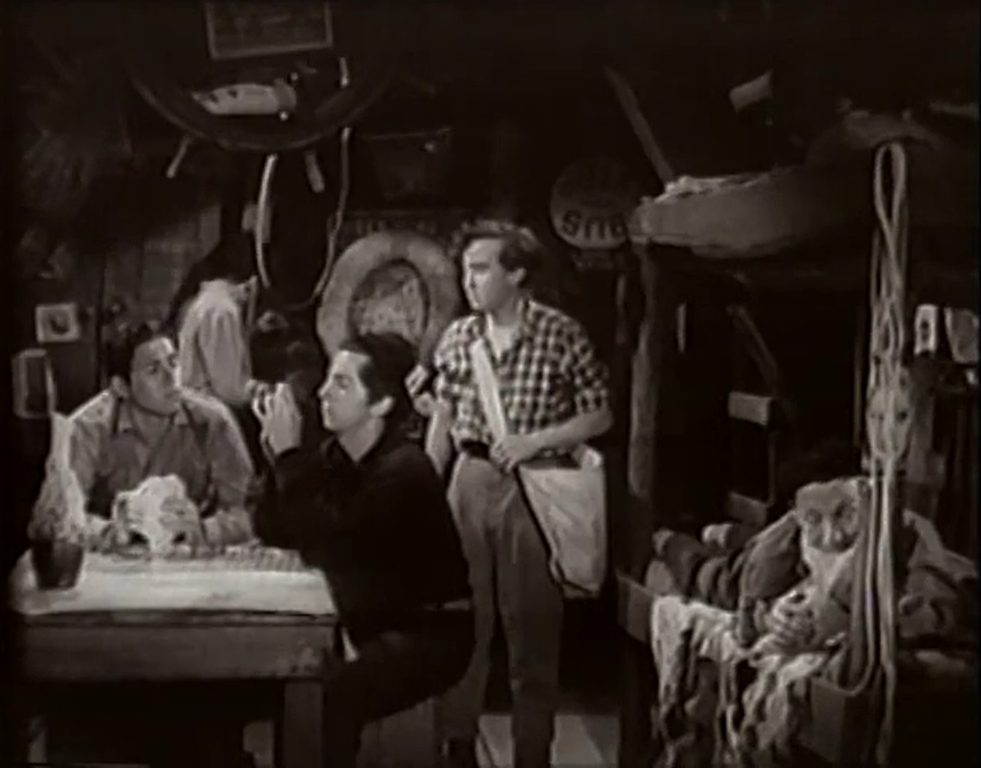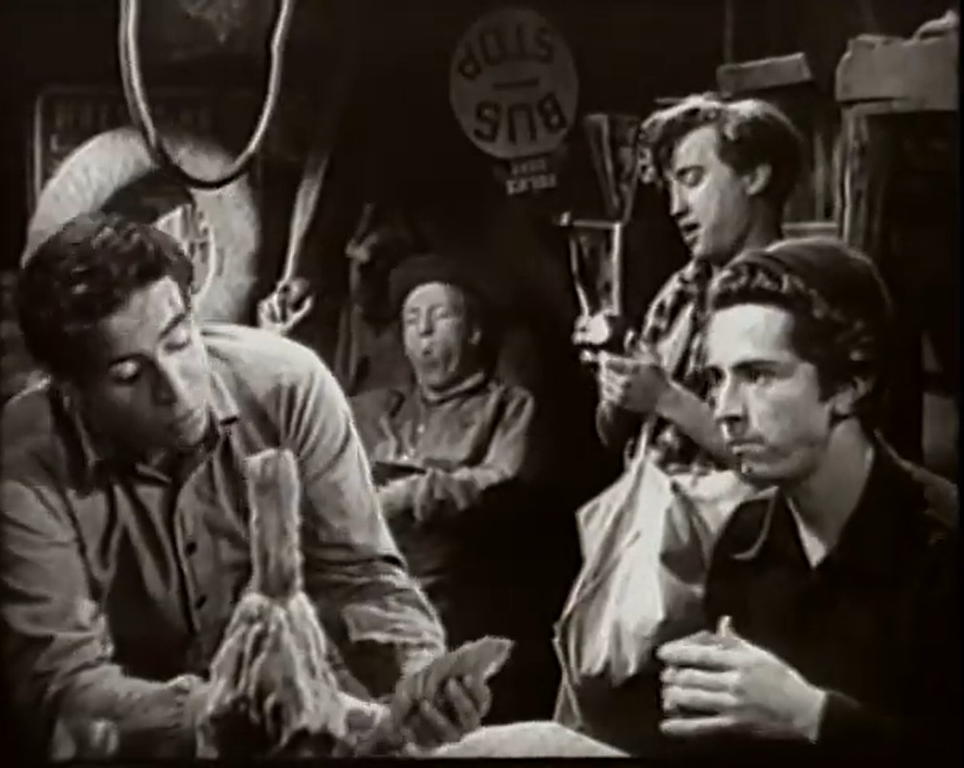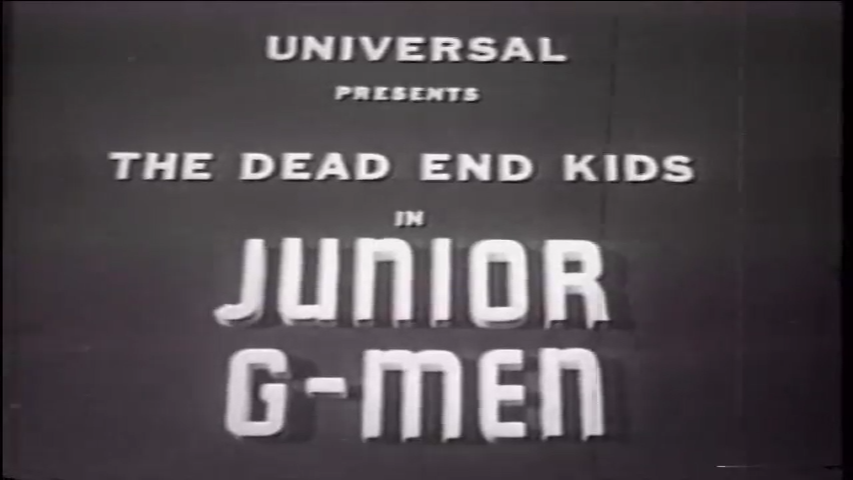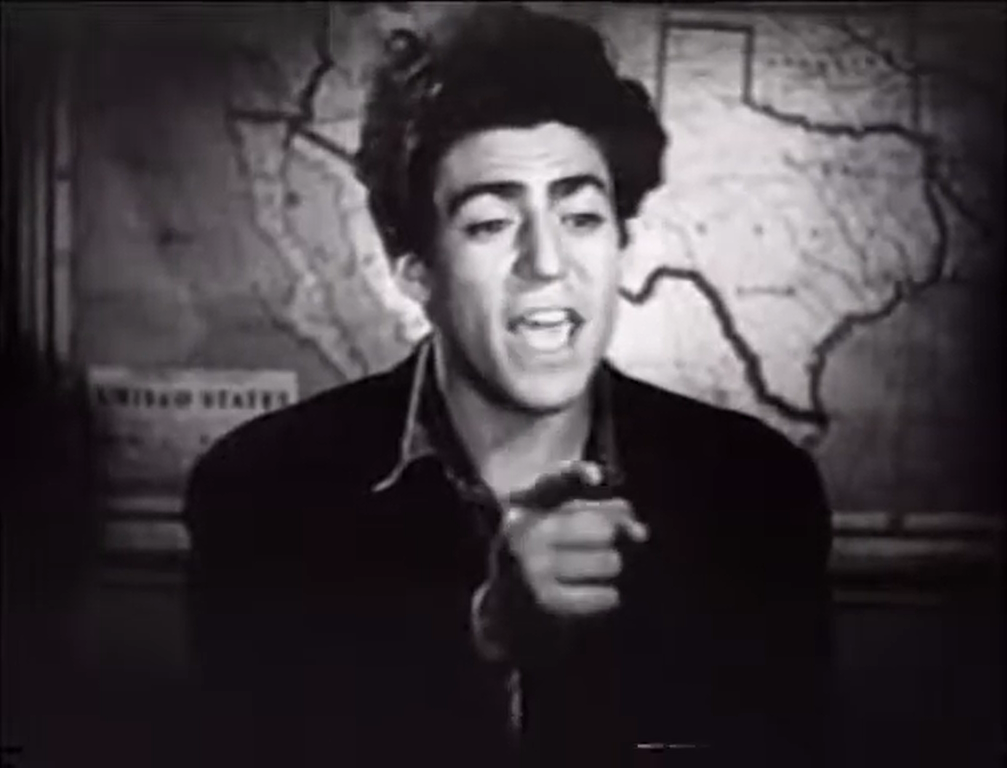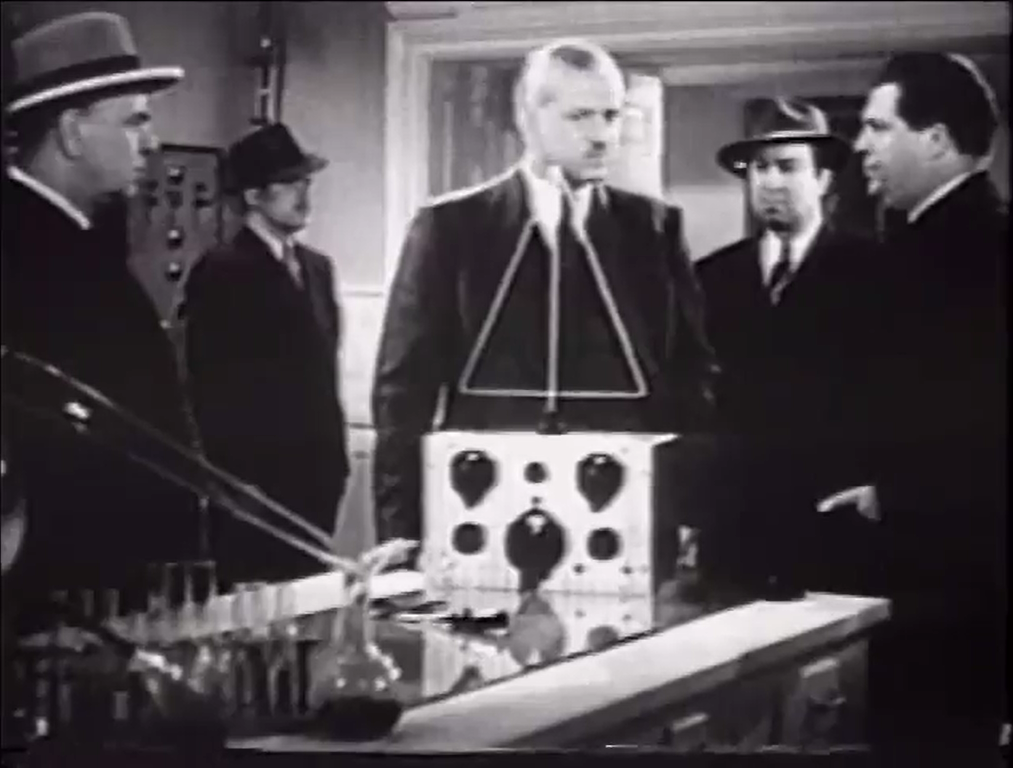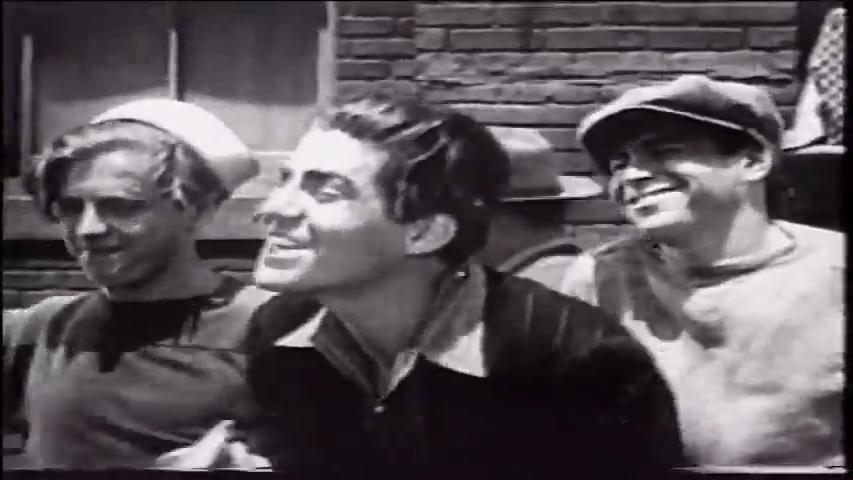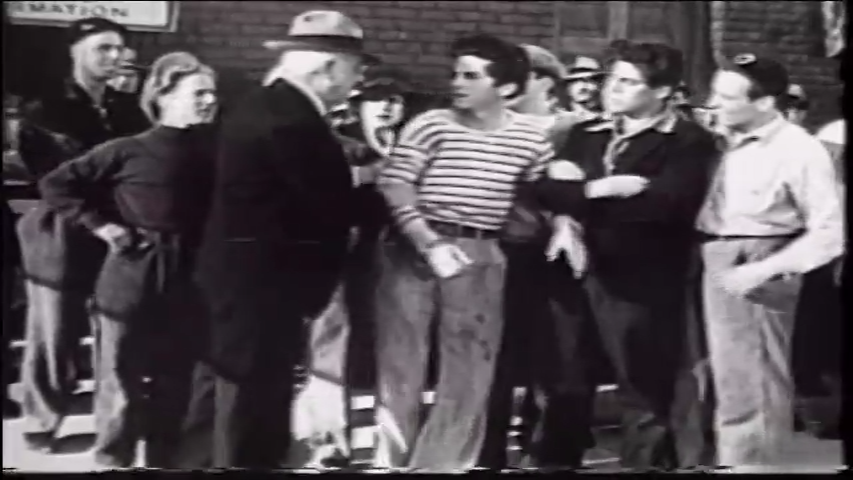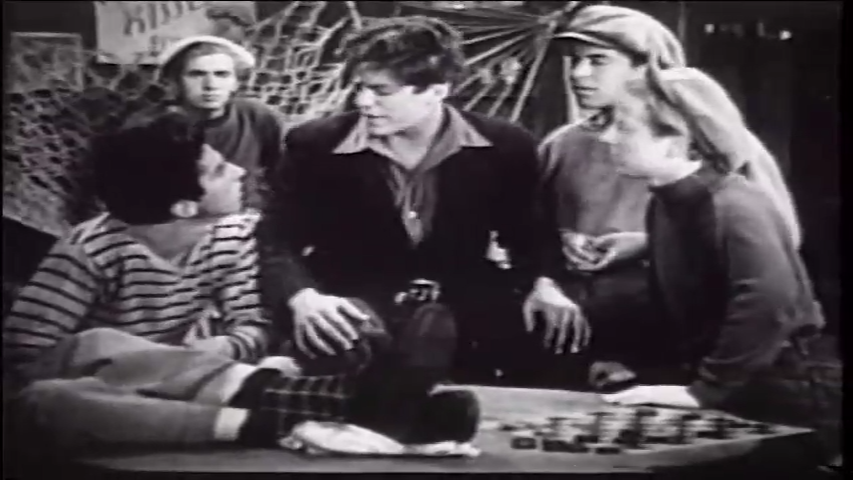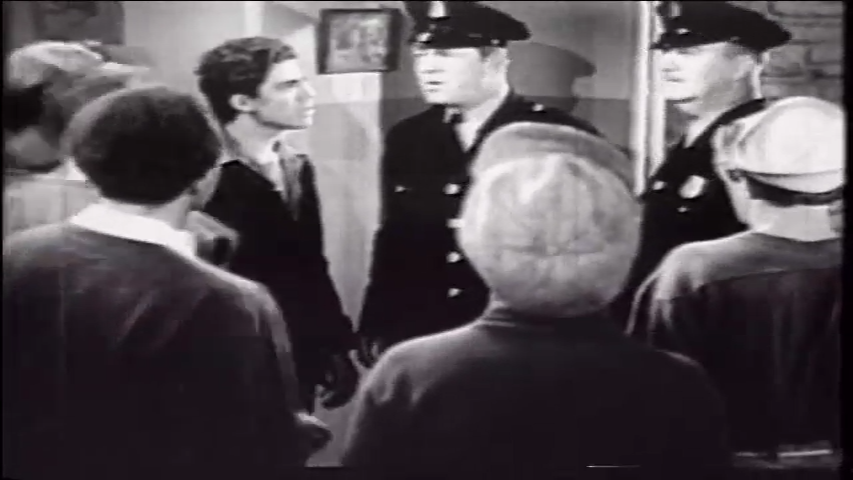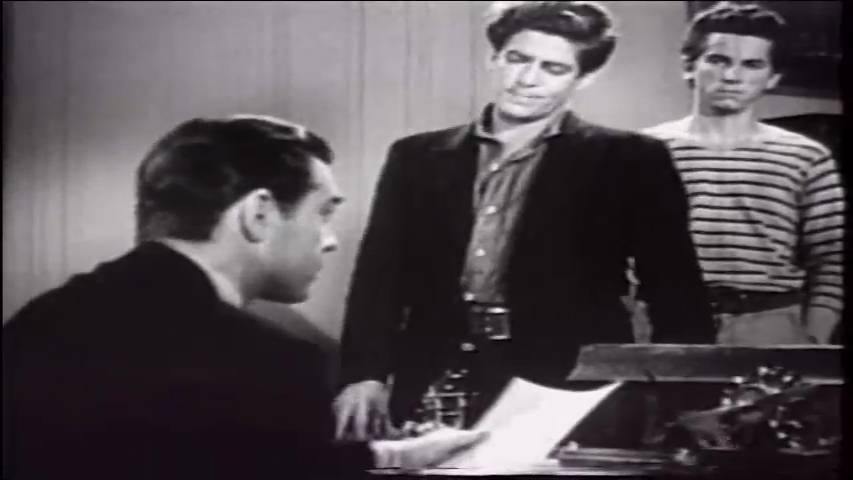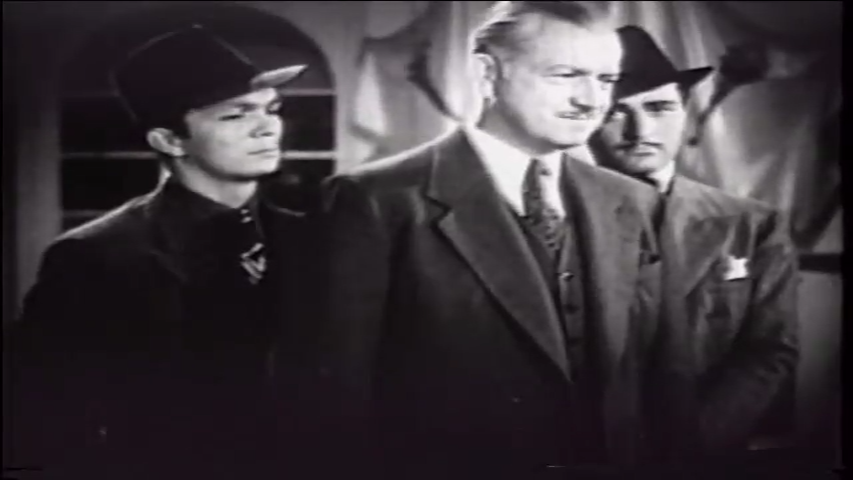-
#417 – Blake of Scotland Yard (1937)
Blake of Scotland Yard (1937)
Film review #417
Director: Robert F. Hill
SYNOPSIS: Sir James Blake is unveiling a new invention to the League of Nations which will ensure world peace, however, the presentation is interrupted by a criminal mastermind known only as “The Scorpion,” who wishes to steal the invention for his own nefarious uses. Jerry Sheehan, an American who has helped create the invention along with Blake’s niece Hope, works with Blake, Hope and their friends to find the invention and uncover The Scorpion’s true identity.
THOUGHTS/ANALYSIS: Blake of Scotland Yard is a 1937 movie serial composed of fifteen chapters released by Victory Pictures. Interestingly enough, a serial of the same name was released ten years prior by Universal Pictures, directed by the same director as this one. It is unfortunately a lost serial and no footage seemingly exists, but from what I can tell, it was quite different from this one, and none of the characters are the same, meaning that this serial is just capitalising on the name of it’s predecessor and it’s sequel, which is quite an odd move considering that ten years is a large gap in a time when there would have been no way to re-watch these serials unless they were re-run in theatres. maybe they bet on adults recognising the name and taking their kids to go see it. Anyway, the serial starts off with Sir James Blake, a retired inspector at Scotland Yard, unveiling an invention he has made along with his niece Hope and their friend Jerry. They are presenting it to the representatives of the league of Nations as a device that can target and destroy battleships from over one hundred miles away. They plan to donate it to the League of Nations to ensure world peace; which is an interesting way of creating peace by giving countries the unlimited capacity to blow each other up. What do they call this miraculous device? a “death ray.” Yes, the architect of peace named the death ray, will surely stop all wars. Nevertheless, the demonstration is interrupted as a criminal mastermind known as “The Scorpion” shows up with his goons and steals the device, hoping to sell it to a foreign power. This sets up the typical serial premise of the heroes foiling the criminal’s various schemes while attempting to unmask him, and for the most part it really falls into the standard serial format without exception.
I suppose what makes the serial unique is that it is set in England, which is different from the usual serials set in unnamed U.S. cities. The trouble is that it is obviously made in the U.S. with American actors, and none of them really make an effort to use an English accent. It sometimes sound likes they’re trying to put on an accent, but it definitely doesn’t sound English. The only character who has an excuse is Ralph Byrd’s character Jerry, who is meant to be American, and who also seems to try and sound a little English. This is Byrd’s first serial appearance, from which he would go on to star in S.O.S. Coast Guard and Dick Tracy in the same year, eventually setting him up to play Tracy in various serials, feature films and TV shows until his death in 1954. One of the running jokes (if you can call it a joke) is that Hope’s kid brother Bobby occasionally uses American slang and phrases, which he or Jerry have to explain to the rest. In one scene, Jerry jokingly chastises Bobby about needing to speak “proper English,” which is completely bizarre considering Jerry is the American, and everybody else also doesn’t seem to speak “proper” English. Bobby is also probably the only character who makes a more significant effort to speak an English accent. Despite the title, there’s not really much in the way of police or detective work, and we only see Scotland Yard itself in one scene. As mentioned, it seems the serial is relying on the name for recognition only. The Scorpion as the villain always walks around with a hunched back, and always covers his face with a claw on his hand (he also wears a mask as well, but we never really see it because of the aforementioned claw). Why the claw? To fit with the “Scorpion” name I guess? Why is he always covering his face with
The action is split between a number of locations which adds a small amount of variety. Most of the action is set in Blake’s stately home, which has a number of secret passageways, underground tunnels and spy-holes for all sorts of tricks to play out. There is also the gang’s hideout in London, where we see stock footage of the London skyline and a street scene which I guess looks London-esque. They could have definitely utilised it more though to give the serial a unique setting. There’s also a good chunk of the serial that takes place in Paris, specifically a café and a hotel. These scenes often feel completely pointless, consisting of some odd dancing by a couple who hate each other, who are also spies…or something like that? it’s really difficult to follow, and frankly very boring. There’s no real sense of it being in Paris either, apart from one guy wears a stripy shirt and another woman a beret in typical style.I think they’re also trying to put on French accents, which is about as successful as the attempts to do English ones. There’s a lot about this serial which just pads out the time, and offers very little to the story (of which there is little anyway). A seventy-minute feature film version was released along with the five-hour serial, which I assume was able to cut out almost all of these pointless scenes, and shows just how much of the serial was inconsequential.
Despite the variety of locations, the sets feel very empty and dull, with no real character to them. There’s not really much action as in other serials, as most of the chapters revolve around following henchmen, or devising a trap to capture a henchman. While most serials throw in a fistfight and vehicle chase almost every chapter, this one doesn’t, and unfortunately doesn’t offer anything interesting to replace it. The identity of The Scorpion when it is revealed is a surprise, but doesn’t really have any ramifications. One of the most distracting things about the serial is the lack of background music. It makes whole scenes completely lifeless, especially the fight scenes, which lack any sort of energy. Overall, as you can probably guess, Blake of Scotland Yard is not a very good serial. Considering we were getting serials like Flash Gordon at around the same time, there’s no way a barebones serial like this could offer anything exciting. The plot is very typical of the serial format, but manages to make it needlessly complicated and difficult to follow across all the locations and the spying, doppelgangers and betrayals that obfuscate the flow of the story. The setting in an English stately home is novel, but undone by sparse sets and lack of appropriate accents. Byrd as the lead gives a charismatic and charming performance, but the rest of the cast are dull and without merit, and Byrd shines much more in his role as Dick Tracy. Give this one a miss, you are not missing much.
-
#416 – Junior G-Men of the Air (1942)
Junior G-Men of the Air (1942)
Film review #416
Directors: Lewis D. Collins, Ray Taylor
SYNOPSIS: “Ace” Holden and his friends hang out at his Father’s airstrip, hoping to enter the local air race while Ace’s younger brother Eddie is inventing a new plane engine. Ace and his friends witness a bank robbery, and when they refuse to cooperate with the local G-man, they try and find the robbers, not realising that they belong to the “Order of the Black Dragonfly” a foreign organisation that is attempting to sabotage American industry and pave the way for an invasion. Ace and his friends join up with the junior G-men in order to combat this threat to themselves and their country…
THOUGHTS/ANALYSIS: Junior G-men of the Air is a 1942 film serial composed of twelve chapters, and the third to feature the young group of actors The Dead End Kids and The Little Tough Guys, although none of the serials are connected or have the same characters. This time, the kids are help to salvage junk at the airfield owned by the Father of one of the boys, Ace. While out collecting junk in their truck, they witness a robbery on a bank by a gang who steal their truck to make their getaway. Ace manages to get a strange broach of one of the men, but when the local G-man, Don Ames asks for the kids cooperation, they refuse due to their distrust of law enforcement. It turns out the robbers belong to a group known as the “Order of the Black Dragonfly,” a fifth column gang of saboteurs looking to destabilise American society to pave the way for a foreign invasion. As the serial progresses and Ace’s younger brother Eddie is kidnapped, the kids join up with the junior G-men, led by Jerry Markham, to find the gang and put a stop to them. The film’s plot is quite similar to Junior G-men, the first serial featuring the group of young actors, but while that one had a setting on land, and Sea Raiders focused on the sea, this one is centred around the air and aeroplanes, although there’s not too much action in the air. At least each of them have something unique about them. Other than that there’s not too much special about the story, but as with its predecessors, having the leads be these young, unruly boys rather than the typical all-american hero offers something a little different to the vast majority of serials.
The characters of the young actors are quite similar to the ones they played in the previous serials, but I suppose they are hired to play those specific roles. The leader of the gang, Ace, is the usual agitator and instigator, although he appears a bit more tidy than the previous serials for reasons I’ll get into below. At least his name isn’t Billy this time as well. Huntz Hall as “Bolts” plays his usual idiots sidekick routine without any real surprises, and “Stick” and “Greaseball” play mostly supporting roles, but they do have more lines and action than in the previous serials. While the kids are still troublemakers and somewhat hostile to any person of the law, they are less abrasive and unlikable than they were in previous serials, which again I’ll get into below. Other characters including “Double Face” Gordon add some variety to the line-up, while Don Ames as the G-man provide the more typical straight-laced law enforcement hero. Once again there’s no real female characters aside from a minor secretarial role, as it’s clear the serial is aimed at young boys of a more rebellious nature. The villains are classed as saboteurs, destroying America from within, and are obviously meant to be representing Japan. As is usual for these serials, The Japanese characters are all played by white Americans in make-up to “look” Japanese, which is not a good look to say the least, and a practice which sadly persevered for years in the film industry. Other than that, there’s nothing too remarkable about them.
Let’s get into the main aim of this serial: it is a giant propaganda piece for young Americans to serve their country in any way possible. By the time of the serials release, the U.S. had officially entered the Second World war after the attack on Pearl Harbour, and Anti-Japanese sentiment as overwhelming. A lot of these serial have secret Japanese societies of saboteurs fuelling this sentiment, as well as convincing the public to suspicious of everything around them. That the rough antics of the lead kids and their hostility to law enforcement is toned down in this serial compared to the previous ones is probably due to delivering this message that everyone must help their country in any way they can, in fact there’s multiple scenes that explicitly deliver this line. The final chapter of the serial is one big battle where the army storms the farm where the villains have set up a base, making it look like a battlefield and displaying the glorious victory of American troops. At the end everyone remarks about how vigilant they must be against enemies from within who threaten to destroy the American way of life, when they get new that Pearl Harbour has been attacked and they must now get ready for war and remain more vigilant than before. A lot of wartime serials push this messaging, but this serial is definitely more blatant about it than others I’ve seen. Maybe because it’s aimed at the younger rebellious generation that might be more reluctant to get behind their country. nevertheless, this makes for a much more interesting finale than you get in most serials, with the large scale battle making for an interesting payoff, even if it feels like mostly stock-footage not involving most of the main cast.
Overall, Junior G-men of the Air is a decent enough serial with plenty of action to keep younger viewers entertained. The overwhelming sense of wartime propaganda that fills some of the scenes is a bit much (although there’s definitely worse), and the frankly racist depiction of Japanese people as sneaky and devious is badly outdated, which was sadly not uncommon in film for a significant period of time. It doesn’t offer much that the previous two serials featuring the young actors doesn’t, but like the other two, at least does something a little different to most serials.
-
#415 – Sea Raiders (1941)
Sea Raiders (1941)
Film review #415
Directors: Ford Beebe, John Rawlins
SYNOPSIS: A gang of kids living by the harbour get wrapped up in a nefarious plot by a foreign agent to steal a new “torpedo boat” that is to be sold to the American government. The boat has been invented by Adam, who is Billy’s older, who is also the leader of the gang. When the plans for the boat are stolen, a local G-man named Brack Warren believes the kids are to blame, and tries to hunt them down. Billy decides that the only way to clear their name is to try and find who stole the plans and get them back before they are captured and Brack sends the kids to the desert…
THOUGHTS/ANALYSIS: Sea Raiders is a 1941 movie serial and the second universal serial featuring the group(s) of young actors known as the “Dead End Kids” and the “Little Tough Guys.” Junior G-men, the first serial was released the previous year. The story centres – as the title suggests – around the sea, where an unknown assailant termed the “Sea Raider” has been destroying ships carrying wartime supplies to America’s allies in Europe. Billy and his gang of street kids are causing trouble and trying to avoid getting caught by local officer Brack Warren, who wants to ship them off to the desert. Billy’s brother Tom has been developing a new torpedo boat that be sold to the government and shipped to its allies, but little does he know his friend Captain Carlton is secretly working with a foreign agent to steal the boat for his own country. When Tom’s workshop is broken into and his blueprints are stolen, Warren suspects Billy’s gang is behind the theft, and they decide to prove their innocence by tracking down the real thieves. The story is fairly similar to the usual serial format, but like its predecessor, deviates somewhat by having the lead characters not be a square-jawed, cowboy-esque white male, but instead this gang of rogue, slang-talking kids who constantly cause trouble. and rebel against authority. The plot flows nicely, and although it falls into some typical tropes of the format, it switches up the locations and perils enough to keep things interesting.
The kid characters, as mentioned, do eschew the typical lead roles, but their characters are almost identical to the ones they played in Junior G-Men. The young actors only play this very specific role though, but it is confusing that this isn’t a direct sequel, and even more so that the lead kid Billy is again playing a character named Billy (whose real name is also Billy). A lot of what I said about the characters from my review of the previous film featuring them still stands: the characters initially come across as rather unlikable, in that they are constantly causing trouble and stealing from people. It’s a bit more toned down in this film though, and their relatives dismiss their antics as mostly harmless. A lot of their antics are also directed at Brack Warren, a local police officer, who provides more of a comic relief role in his inability to apprehend the kids and his general incompetence, so the kid’s actions don’t seem so bad. Other than the main cast, the supporting cast are more in line with a typical serial, with a villain that is pretending to be the heroes friends, backed by a foreign agent (although the name of his country is not mentioned, he is obviously German). The theme of the serial around bewaring foreign spies and standing up for your country are typical of wartime serials, and like its predecessor, this one is perhaps aimed at younger viewers who like the kids in the serial are troublemakers, but can still support their country.
There aren’t too may serials with a focus on the sea, so that makes the serial stand out a bit more (The only other one I have seen is S.O.S. Coast Guard). This setting brings with it a lot of chases on the sea and even fights with sharks and an octopus. The camerawork is fairly decent, and the shots at sea are well done and convincing for the time. On the negative side, I noticed that the twelve chapters are a little shorter than usual. Given that the beginning of the chapter is a text-scrolling recap of the previous chapter, then there is playing the end of the previous chapter for the cliffhanger and it’s resolution, you are basically getting less than fifteen minutes per chapter, which if you’re going to the theatre every week seems like a bit of effort for little in return. On the other hand though, this means that the chapters are quick and fast-paced, so you’re not bored with scenes of pointless dialogue of characters explaining the plan they’re about to execute. Like it’s predecessor, Sea Raiders offers something a little different in the format: not too much, but enough. The story is familiar, but well-paced, and the action sequences are well done. The lead kids are a little erratic and difficult to root for when they act in their spiteful and rough manner, but they settle into the role of heroes well enough when confronting the real villains. Similar to Junior G-men, it’s worth a watch if you’re a fan of the format (although it doesn’t really work as a format nowadays), and would have been entertaining back when it was released too, I imagine.
-
#414 – Junior G-men (1940)
Junior G-Men (1940)
Film review #414
Directors: Ford Beebe, John Rawlins
SYNOPSIS: A group of street-wise kids led by Billy Barton are caught up in the deadly scheme of the “Order of the Flaming Torch” to sabotage and disrupt the government with the help of foreign agents to replace the government with their own men. F.B.I. agent Jim Bradford wants Billy’s assistance in locating his Father Colonel Robert Barton, who Billy hasn’t seen for five years, and who Brad ford believes is being held hostage by the Order. Billy and his gang are reluctant to help out any authority figures, and Bradford suggests they join up with his nephew Harry Trent, who is leading a group of junior G-men in town to aid the investigation…
THOUGHTS/ANALYSIS: Junior G-Men is a 1940 movie serial and the first of three starring the group of young actors referred to as the “Dead End Kids” and the “Little Tough Guys,” who starred in a number of films together. The serial starts off showing the gang of kids going round town being general nuisances. In the first few minutes, we see them steal, cause a car chase, start a fight, and generally just create chaos in their neighbourhood. From the start, these kids are not very likeable with their flagrant disregard for anyone else’s wellbeing but their own, and their constant hostility to any kind of law enforcement. An F.B.I. G-man named Jim Bradford questions Billy Barton, the leader of the boys, about the disappearance of his Father, and asks for Billy’s co-operation to find him. Again, the kids are aggressive and hostile about helping any “copper,” and leave. Jim Bradford suggests his nephew Harry Trent, a junior G-man, attempts to train the boys to take on the Order with them instead. Billy and the boys are initially hostile to this as well, but gradually start to work together with them to take down the “Order of the Flaming Torch” who have kidnapped Billy’s Father. The serial clears the antagonism between the characters eventually and it settles down into the usual hi-jinks of chases and fistfights that are expected of the format. The street kids also get to learn about the different techniques that the g-men use to investigate crimes, which leads to a blend of the street-wise and the methodical that works well.
The cast of characters are somewhat different to what you usually get in these serials. Billy Barton and the street-wise kids are certainly a contrast to the square-jawed, cowboy-esque men that are typically the stars of these serials as portraying a typical all-American heroism. Instead, Billy and his gang are rough-looking, unkempt and hostile to the law. The theme of the serial is, like many of the serials of the time, centred around the theme of spies, sabotage, and “bewaring the enemy within.” Billy and the gang are persuaded to put aside their contempt of the law for the sake of patriotism and their country. I think perhaps this serial was aimed at the rebellious younger generation in order to convince them to do the same thing in war-time as when this serial was released in 1941. Other than Billy, most of the other kids don’t get much screentime or dialogue apart from Lug, who provides the comic relief. Jim Bradford provides the more typical hero role that you usually see in these serials. Harry Trent as the junior G-man who is around the same age as the kids provides a good counter-act to Billy, and watching the two learn to work together gives the serial a good flow and sense of development as the serial unfolds. The villains are nothing special, but their interactions with their hostage Robert Barton (Billy’s Father), who is constantly trying to outwit them and escape, provides a source of ongoing tension. Outside of these characters, there’s nothing else worth mentioning; there isn’t even a single female character in the roster, other than Bradford’s secretary, who has maybe two or three lines.
Overall, Junior G-men is something a little different in the format, which is a rare thing. The main characters are not the typical heroes; they are rude, aggressive and at the beginning very unlikable. As the serial goes on, it settles into a more traditional flow as the kids ally themselves with the G-men. There’s enough going on at all times to maintain interest for the viewer, and a mix of different situations across the fairly large cast means the story moves along across all these characters equally well. On the negative side, as mentioned the kids are in the beginning rather unlikeable, but they do settle into the role later on. Also the action is a little crowded and uncoordinated, as sometimes the whole gang of kids get involves in a fight which makes it difficult to keep track of. The action scenes and cliff-hangers are nothing spectacular, but overall it’s nice to see something a little different from this format.
